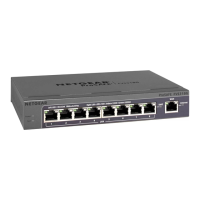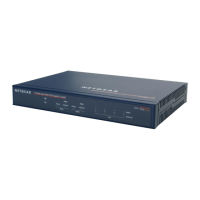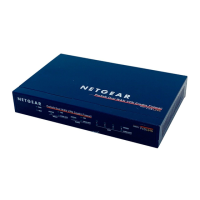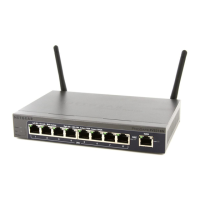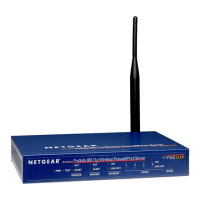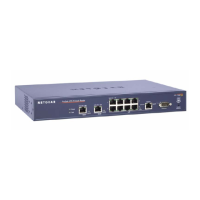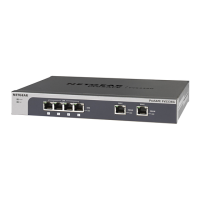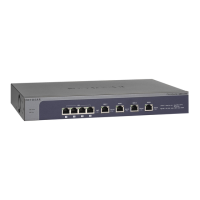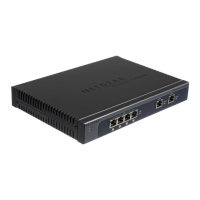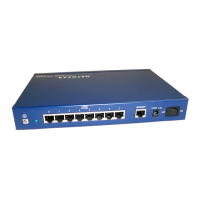Introduction
19
ProSecure Unified Threat Management (UTM) Appliance
Autosensing Ethernet Connections with Auto Uplink
With its internal four- or six-port 10/100/1000 Mbps switch and single or dual
(model-dependant) 10/100/1000 WAN ports, the UTM can connect to either a 10 Mbps
standard Ethernet network, a 100 Mbps Fast Ethernet network, or a 1000 Mbps Gigabit
Ethernet network. The four LAN and one or two WAN interfaces are autosensing and capable
of full-duplex or half-duplex operation.
The UTM incorporates Auto Uplink
TM
technology. Each Ethernet port automatically senses
whether the Ethernet cable plugged into the port should have a normal connection such as to
a PC or an uplink connection such as to a switch or hub. That port then configures itself
correctly. This feature eliminates the need for you to think about crossover cables, as Auto
Uplink accommodates either type of cable to make the right connection.
Extensive Protocol Support
The UTM supports the Transmission Control Protocol/Internet Protocol (TCP/IP) and Routing
Information Protocol (RIP). For further information about TCP/IP, see Internet Configuration
Requirements on page 573. The UTM provides the following protocol support:
• IP address sharing by NAT. The UTM allows many networked PCs to share an Internet
account using only a single IP address, which might be statically or dynamically assigned
by your Internet service provider (ISP). This technique, known as Network Address
Translation (NAT), allows the use of an inexpensive single-user ISP account.
• Automatic configuration of attached PCs by DHCP. The UTM dynamically assigns
network configuration information, including IP, gateway, and Domain Name Server
(DNS) addresses, to attached PCs on the LAN using the Dynamic Host Configuration
Protocol (DHCP). This feature greatly simplifies configuration of PCs on your local
network.
• DNS proxy. When DHCP is enabled and no DNS addresses are specified, the firewall
provides its own address as a DNS server to the attached PCs. The firewall obtains
actual DNS addresses from the ISP during connection setup and forwards DNS requests
from the LAN.
• PPP over Ethernet (PPPoE). PPPoE is a protocol for connecting remote hosts to the
Internet over a DSL connection by simulating a dial-up connection.
• Quality of Service (QoS). The UTM supports QoS, including traffic prioritization and
traffic classification with Type of Service (ToS) and Differentiated Services Code Point
(DSCP) marking.
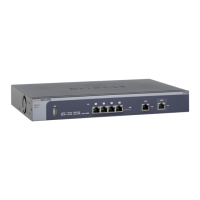
